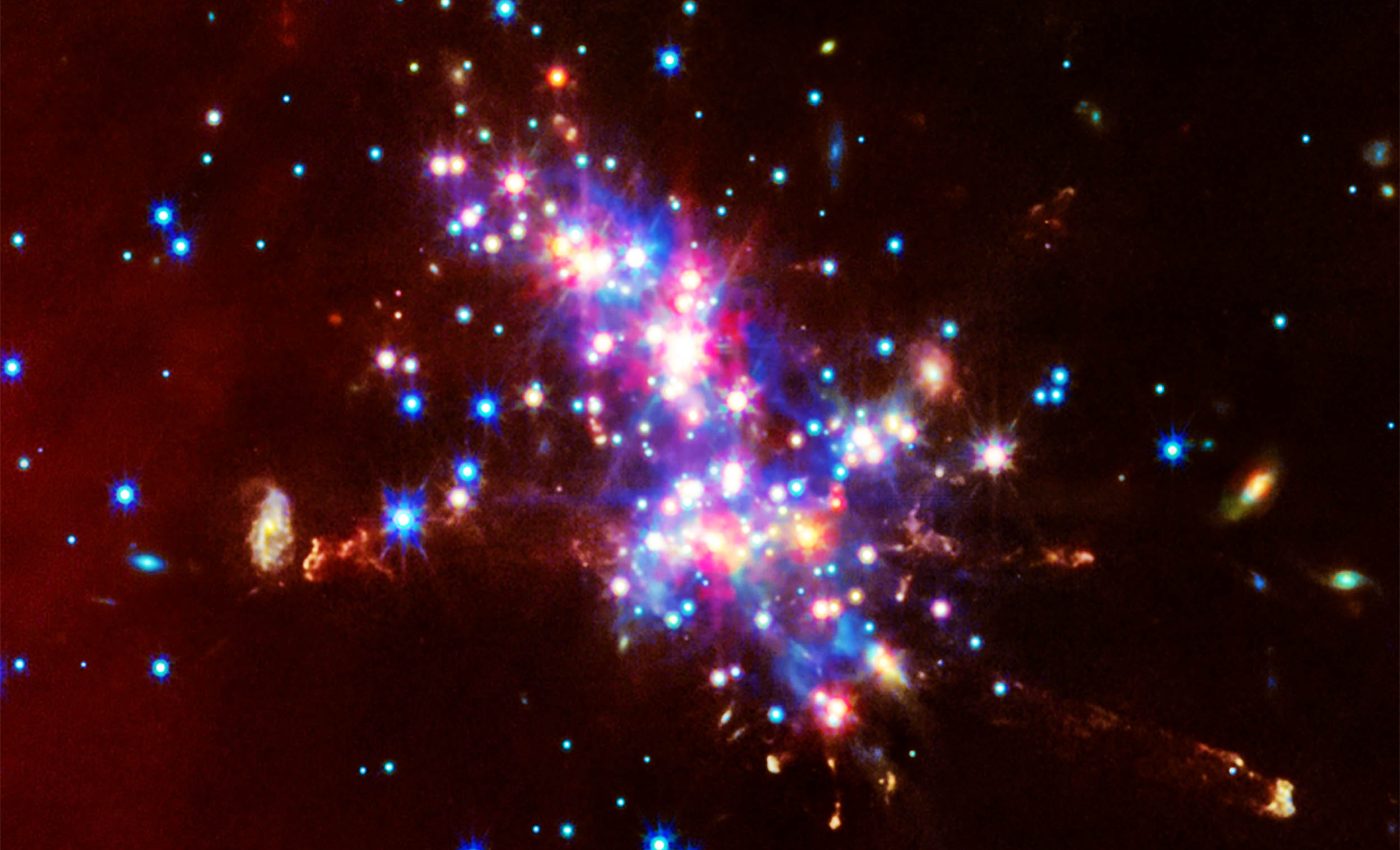
Stunning star clusters captured in the extreme outskirts of the Milky Way
NASA’s James Webb Space Telescope has recently delivered intriguing insights about star clusters in the outer Milky Way.
The telescope zeroed in on some key areas of the galaxy, providing fascinating snapshots of new stars, material jets, and a cluster of background galaxies with red clouds gadding about the space.
Star clusters in the extreme outer galaxy
There is a specific area of our galaxy that has piqued scientists’ interest — the Extreme Outer Galaxy.
Situated a staggering 58,000 light-years from the Galactic Center, this remote region presents a stark contrast to our planetary home, which is approximately 26,000 light-years from the center.
Two critical instruments were used by a team of astronomers to study this far-flung space.
Webb’s NIRCam (Near-Infrared Camera) and MIRI (Mid-Infrared Instrument) were utilized to capture images of Digel Clouds 1 and 2, molecular clouds inside the Extreme Outer Galaxy.
Armed with these top-notch tools, the team was able to observe these clusters in unprecedented detail.
Stars in the outer Milky Way
Not only were the experts able to gather intel on star clusters undergoing bursts of star formation, but they also secured details about the components, including young protostars, jets, and distinctive structures.
The telescope time that captured these observations was allocated to Mike Ressler, a scientist from NASA’s Jet Propulsion Laboratory (JPL) in Southern California.
The work by Ressler and his team is helping us understand how stars form in the outer Milky Way.
Images of star-forming regions
So, what do we know thus far? We are aware of regions where stars form, but detailed knowledge about their properties remained elusive until now.
Natsuko Izumi of Gifu University and the National Astronomical Observatory of Japan (NAOJ) noted that Webb’s findings built upon existing observations.
“In the past, we knew about these star-forming regions but were not able to delve into their properties,” said Izumi.
“The Webb data builds upon what we have incrementally gathered over the years from prior observations with different telescopes and observatories. We can get very powerful and impressive images of these clouds with Webb.”
Stars within a dense Digel Clouds sub-cluster
The Digel Clouds in our galaxy are relatively deficient in elements heavier than hydrogen and helium, making them comparable to dwarf galaxies and the Milky Way in its early history.
The team leveraged this opportunity and captured images showing the activities within four clusters of young stars in the Digel Clouds — labeled 1A, 1B, 2N, and 2S.
One particular attraction was Cloud 2S, where jets of material were seen ejecting from new stars within a dense sub-cluster.
“We know from studying other nearby star-forming regions that as stars form during their early life phase, they start emitting jets of material at their poles,” said Ressler.
“What was fascinating and astounding to me from the Webb data is that there are multiple jets shooting out in all different directions from this cluster of stars. It’s a little bit like a firecracker, where you see things shooting this way and that.”
Elemental composition of the Digel Clouds
The revelations concerning the elemental composition of the Digel Clouds offer profound insights into the chemical makeup of early star-forming regions.
Studying the relative abundance of lighter elements has considerably enhanced our comprehension of conditions that might have prevailed in the primordial cosmos.
These clouds, having roughly the same composition as nascent galaxies, act as time capsules, granting us access to the formative periods of the universe.
The scientists emphasize the importance of this discovery, as it allows for the refinement of theoretical models regarding star formation and the evolutionary processes of galaxies, propelling our understanding of cosmic chronology forward.
Future expeditions and star clusters
The exploration of the Extreme Outer Galaxy is merely a prelude to the broader scientific possibilities that await with the James Webb Space Telescope.
As Webb continues to peel back layers of cosmic history, future missions are already on the horizon, aiming to probe ever deeper into the galaxy’s mysterious corners.
Astronomers are particularly enthusiastic about pursuing further study of similar molecular clouds in more remote, uncharted galactic spaces.
These endeavors will not only illuminate the conditions of our cosmic past but also inspire new inquiries into the intricate dynamics of star formation.
The potential of Webb’s ongoing mission is boundless, promising a cascade of astronomical discoveries that will etch an indelible imprint on our understanding of the universe.
Many stellar mysteries left to unravel
Webb’s imagery provides a starting point for the team, as they intend to explore this “outpost” of the Milky Way further.
The experts hope to answer questions about star clusters in the Extreme Outer Galaxy and the relative abundance of stars of various masses in these clusters.
Izumi is keen on studying how star formation occurs in these regions and aims to investigate the shorter lifetimes of circumstellar disks in the Extreme Outer Galaxy.
Although the complex process of star formation still houses many mysteries, Webb’s findings are gradually helping us piecing together this stellar puzzle.
The study is published in the Astronomical Journal.
—–
Like what you read? Subscribe to our newsletter for engaging articles, exclusive content, and the latest updates.
Check us out on EarthSnap, a free app brought to you by Eric Ralls and Earth.com.
—–













